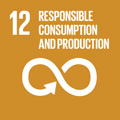- Docente: Nadia Burani
- Credits: 6
- SSD: SECS-P/01
- Language: English
- Teaching Mode: Traditional lectures
- Campus: Bologna
- Corso: Second cycle degree programme (LM) in Applied Economics and Markets (cod. 5969)
-
from Sep 21, 2023 to Oct 25, 2023
Learning outcomes
At the end of the class, the student has a working knowledge of the basic tools and results of the classical microeconomic theory for perfectly competitive environments. In particular, the class focuses on: - Consumer choice: utility maximization, expenditure minimization and the revealed preference approach. - Choice under uncertainty and insurance decisions. - Firm choice: profit maximization and cost minimization. Finally, the student is able to apply these theoretical tools to econometric analyses.
Course contents
ORGANIZATION OF LECTURES:
The course is organized with all lectures taught in presence. Exams are in presence too.
COURSE CONTENT:
PART I: Consumer behavior
1. Utility maximization
2. Expenditure minimization
3. Duality and comparative statics
4. Decisions under uncertainty: Expected utility theory
PART II: Firm behavior
5. Technology and production function
6. Profit maximization
7. Cost minimization
8. Cost functions, duality
Readings/Bibliography
The main textbook is Jehle G.A. and P. Reny: "Advanced Microeconomic Theory, Prentice Hall, 2010.
Further readings:
- D.M. Kreps: "A Course in Microeconomic Theory", Prentice Hall, 1990
- A. Mas-Colell, M.D. Whinston, J.R. Green:"Microeconomic Theory", Oxford University Press, 1995 (more advanced)
- H. R. Varian: "Microeconomic Analysis", third Edition 1992, W.W. Northon & Co. Inc.
Slides and digital boards etc. can be found on Virtuale
Teaching methods
Lectures and tutorials.
As for mathematical prerequisites, a good knowlwdge of the following topics is needed:
- linear algebra
- functions of many variables
- differential calculus
- optimization subject to constraints
Assessment methods
The final assessment consists in a written examination with analytical exercises and theoretical questions. Analytical exercises are worth 2/3 of the exam while theoretical questions are worth 1/3.
No oral examinations are admitted.
Teaching tools
Theory will be complemented by tutorials to be added to the ordinary time schedule.
Office hours
See the website of Nadia Burani
SDGs




This teaching activity contributes to the achievement of the Sustainable Development Goals of the UN 2030 Agenda.
